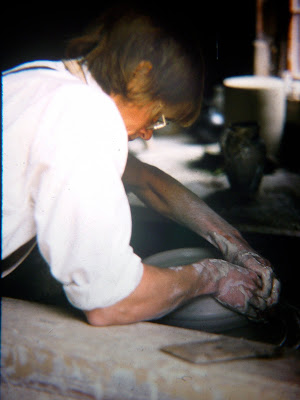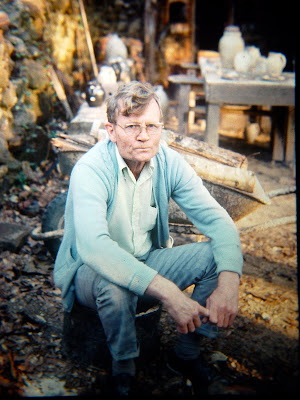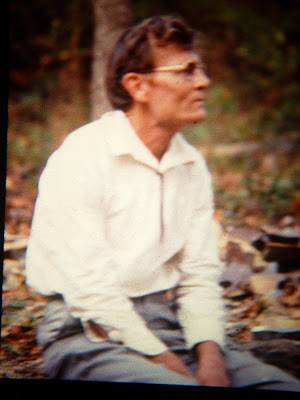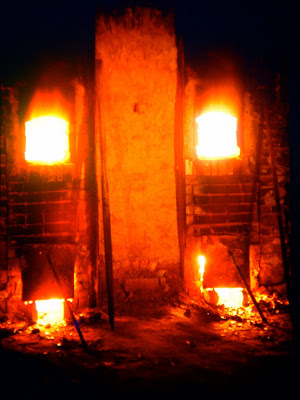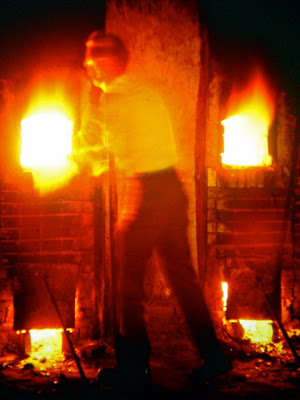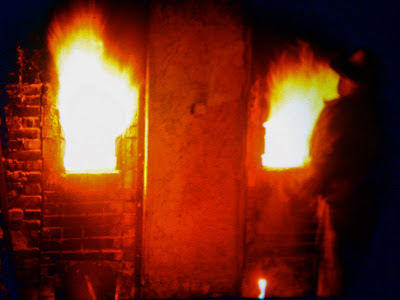
After several naïve experiences of renting a house, not having enough money for all the deposits, meeting the crafts director of Westville who knew nothing of me coming, I finally made it to my first day of work. Westville was much different during daylight hours when it was actually open to the public. A large part of my job was to demonstrate pottery making, 1850 style, to a steady stream of visitors. We dressed in period costume, but fortunately did not have to role play the part as well. I was petrified with the thought of having to try to throw on those awkward wheels, balanced on one foot and trying to act calm and in control while groups of people stood around watching and asking questions! I went down to the village after hours to practice before that first day! The magic was wearing off, and it didn't really help when I later found out that D.X. hadn't seen anything especially “promising in me” - he just needed a willing body. Not that he didn't care that I had an interest in pottery, he just said he could teach me whatever I didn't yet know. Kinda burst that bubble...

Eventually I became more comfortable working in front of people and actually started to enjoy it, except maybe for the constant stream of predictable questions. “Where do you get your clay?” “Do you know how the Indians used to do that?” “Does your leg get tired?” and my favorite “Why do you have to make the wheel go round?” Hmmm....


The magic did return, as the sights, sounds and smells of 1850 filled our days. Of course it was still special after hours when everything was still and quiet. Jane got a job there, too, which doubled our income! She was down at the village every day anyway! She became hostess of the McDonald house, the village “mansion.” Besides giving tours of the house, her duties included spinning on a “walking wheel,” weaving, and cooking over an open hearth as well as the small wood burning cook stove, the latest convenience in 1850!








Life in 1850 was great for this newly wed couple. We made some good friends, learned a lot, and generally enjoyed life in southwest Georgia. I picked DX's brain about pottery making, kiln and wheel building, and a multitude of other subjects. He was a wealth of knowledge and skill, but you had to coax it out of him. We spent hours talking while working in that candle-lit cabin, especially during the winter months when visitors were fewer. I slowly absorbed an appreciation for early American stoneware and the potter's life. DX worked with his father during the great depression when itinerant potters would travel from pottery to pottery and often had specialties, like jugs, or churns. He told me that during a time when common laborers made $1 a day, a good potter could make $3 and go fishing in the afternoon!













